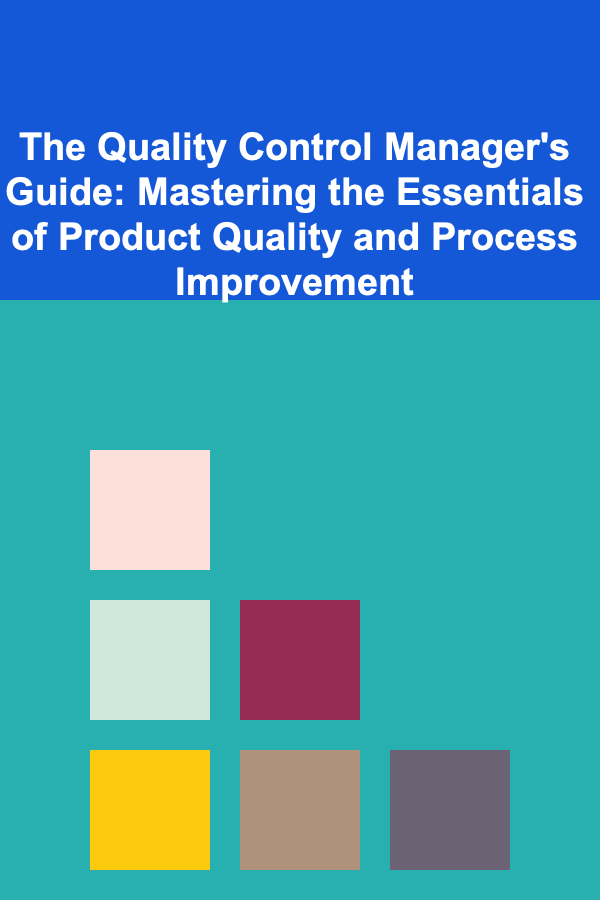
How to Prepare Your Child for Their First Eye Exam
ebook include PDF & Audio bundle (Micro Guide)
$12.99$5.99
Limited Time Offer! Order within the next:
Not available at this time

Taking your child for their first eye exam can feel like a milestone in both their health journey and your parenting experience. Eye exams are essential for detecting vision issues early on, which can be vital for their overall development, academic success, and self-confidence. However, for many children, the idea of visiting an eye doctor can be daunting. It's not uncommon for children to feel anxious about unfamiliar environments, especially those that involve medical procedures.
This article will guide you through how to prepare your child for their first eye exam, offering practical tips to ensure that the experience is comfortable, informative, and even enjoyable. Understanding the importance of eye health, how the exam works, and how to communicate with your child about what to expect can set the foundation for a positive visit.
Why Eye Exams Are Important for Children
Eye health is an often overlooked aspect of overall well-being, but it plays a major role in a child's development. Vision problems can affect a child's ability to learn, participate in sports, and even engage socially. Early detection of eye problems such as nearsightedness, farsightedness, amblyopia (lazy eye), or strabismus (crossed eyes) can prevent more serious issues later on.
Some signs that may indicate your child needs an eye exam include:
- Squinting, rubbing their eyes, or complaining of headaches
- Difficulty reading or seeing objects clearly from a distance
- Covering one eye to read or watch TV
- Complaints of blurred vision or double vision
- Difficulty with school performance, especially in tasks like reading or writing
Even if your child doesn't exhibit symptoms, it's important to schedule a comprehensive eye exam as early as possible, ideally by the time they turn 3 years old. If there is a family history of eye conditions, your pediatrician or optometrist may recommend an even earlier check-up.
When Should Your Child Have Their First Eye Exam?
The American Optometric Association (AOA) recommends that children have their first comprehensive eye exam at the age of 6 months. This early exam helps detect any serious problems like crossed eyes or cataracts. After that, children should have eye exams at the following ages:
- 3 years old: To detect refractive errors and other vision issues.
- 5 years old: To ensure vision is developing properly and to check for any abnormalities.
- Every two years thereafter: Unless there are concerns or symptoms that suggest a more frequent need for exams.
If you notice any signs of vision issues earlier than these typical check-up times, it's important to take your child to an eye doctor sooner.
How to Prepare Your Child for Their First Eye Exam
Taking the necessary steps to prepare your child for their first eye exam can go a long way in reducing their anxiety and making the visit a positive experience. Here are some strategies to help them feel comfortable, confident, and ready for the exam.
1. Talk About the Eye Exam in Advance
The first step in preparing your child for their eye exam is talking about it in advance. The more your child knows about what will happen, the less likely they are to be afraid of the unknown. Use simple, age-appropriate language to explain why the eye exam is important and what to expect.
For younger children, you can say something like, "We're going to visit the doctor to make sure your eyes are healthy, just like how we visit the doctor to check your overall health. The doctor will look into your eyes with a special light to see if they're working well."
For older children, you can explain that the eye exam is much like a check-up at the pediatrician's office, but focused specifically on their eyes. Reassure them that the doctor will be gentle and there's nothing to be afraid of.
2. Role Play the Visit
Children often benefit from role-playing before experiencing something new. You can create a mock eye exam at home, using a flashlight or a toy stethoscope to simulate the process. This gives your child a chance to practice sitting still, focusing on objects, and following instructions from you, as the "doctor."
You could even set up a "waiting room" with toys or books to simulate the experience of waiting at the doctor's office. This familiarity helps your child feel more in control of the situation.
3. Keep the Conversation Positive
When discussing the eye exam, keep the tone positive and emphasize how fun and easy it will be. Tell your child that they get to meet a friendly eye doctor who helps take care of people's eyes. You might even suggest that the eye exam will help them see better, which can excite children who are curious about their vision.
Avoid using negative or fearful language. Phrases like "it won't hurt at all" or "there's nothing to worry about" can reassure your child. Try not to use words that might trigger anxiety, such as "shots" or "tests," which may remind them of past medical appointments.
4. Bring Comfort Items from Home
The eye exam office might seem unfamiliar or intimidating, especially for younger children. To help ease their nerves, bring along a favorite stuffed animal, blanket, or toy. This comfort item can help provide reassurance during the visit and make the experience feel less overwhelming.
You can also bring a book, tablet, or device with a movie to entertain your child while waiting. A calm and comfortable waiting time can set a positive tone for the rest of the visit.
5. Explain the Procedure in Simple Terms
For older children, you can explain what will happen step-by-step. You might say something like:
"First, the doctor will ask you some questions and have you read letters or numbers off a chart. You might have to wear special glasses or look through a machine to see how well your eyes are working. The doctor will make sure that everything is okay with your eyes. It's all about checking that your eyes are healthy!"
Children may feel less anxious when they know exactly what to expect. Explain any equipment that will be used, such as the light used to examine their pupils or the puff of air sometimes used to test eye pressure.
6. Focus on the Fun Aspects
In addition to discussing the seriousness of the exam, highlight the fun aspects of it. For example, children may find it amusing to identify letters on the eye chart, or they may be curious about how well they can see through different lenses. You can also emphasize how they'll be getting a sticker or a small toy afterward if the office offers these rewards.
7. Prepare for Possible Challenges
Some children may be apprehensive about certain aspects of the exam, such as the dilation drops. If your child needs their eyes dilated, prepare them by explaining that the drops might sting a little but that they're necessary to help the doctor see their eyes better.
It's also helpful to explain that they may have blurry vision for a short while after the dilation, which will go away after a few hours. By preparing for these minor challenges, you can help your child feel more in control and less frightened.
8. Make It a Positive Experience
After the exam, be sure to praise your child for their cooperation. Emphasize how proud you are of them for being brave. Some pediatricians or optometrists may even offer a sticker, certificate, or small toy as a reward for participating, which can turn the experience into a positive memory.
What Happens During the Eye Exam?
Understanding the steps of an eye exam can help you explain the process to your child. Here's a brief overview of what typically happens:
- Preliminary questions: The doctor will ask about your child's health history, any family history of vision problems, and whether you've noticed any vision issues.
- Visual acuity test: Your child will be asked to read letters or shapes on an eye chart, which helps the doctor assess how clearly your child can see at various distances.
- Refraction test: The doctor may use a machine to measure the way light enters your child's eyes. This helps determine if they need glasses or a prescription adjustment.
- Pupil response: The doctor will shine a light into your child's eyes to check their pupils' reactions and the health of the retina.
- Eye alignment and coordination: The doctor will check how well the eyes work together, which can reveal conditions like strabismus or amblyopia.
- Additional tests: Depending on the doctor's findings, your child may undergo additional tests such as eye pressure tests or a more detailed eye health assessment.
Conclusion
Preparing your child for their first eye exam can help alleviate their fears and ensure the visit is a positive experience. By providing information, setting expectations, and offering emotional support, you can turn the exam into an exciting opportunity for them to learn about eye health. Ultimately, regular eye exams will help ensure that your child's vision remains in tip-top shape, contributing to their overall well-being and success as they grow.

How to Assess the Effectiveness of Your Current Soundproofing Measures
Read More
How to Market and Sell Digital Fitness Challenges: An Actionable Guide
Read More
How to Store Your Art and Craft Supplies in Small Spaces
Read More
The Quality Control Manager's Guide: Mastering the Essentials of Product Quality and Process Improvement
Read More
How to Track Life Insurance Expenses as a Small Business Owner
Read More
How to Price Your Content Writing Services: A Complete Guide
Read MoreOther Products

How to Assess the Effectiveness of Your Current Soundproofing Measures
Read More
How to Market and Sell Digital Fitness Challenges: An Actionable Guide
Read More
How to Store Your Art and Craft Supplies in Small Spaces
Read More
The Quality Control Manager's Guide: Mastering the Essentials of Product Quality and Process Improvement
Read More
How to Track Life Insurance Expenses as a Small Business Owner
Read More